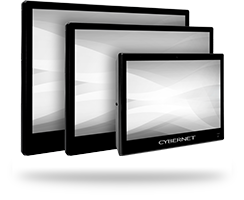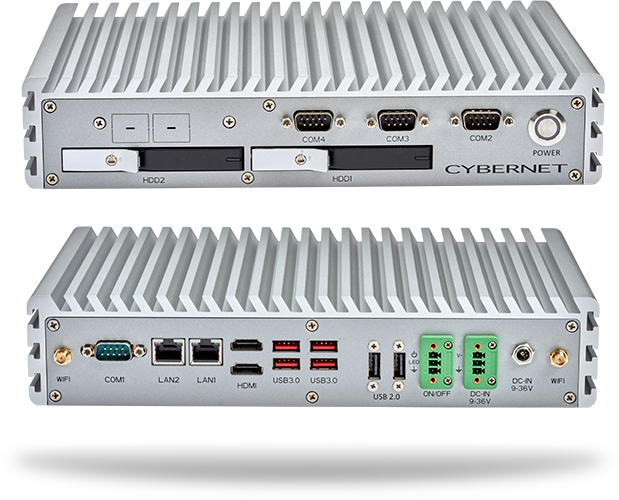Security is vital to all industries, from manufacturing to the healthcare sector. Breaches in security can result in stolen proprietary materials, financial loss, or worse: a breach in cybersecurity in healthcare, for example, may even put lives in jeopardy. Companies have turned to identification technologies like RFID and smart cards to protect themselves, using them as ID cards to ensure on-site personnel are authorized to company properties and confidential information.
RFID and Smart Card Technologies: A Breakdown
ID cards provide security for companies by identifying employees and guests. Two access systems commonly used are RFID and smart cards.
RFID (Radio-Frequency Identification) uses radio waves to identify and track tags attached to objects automatically. That tag is placed in the employee's ID keycard, transmitting a unique signal when entering the range of an RFID reader. The requested resource is then made available, whether access to company properties or business computers.
Smart cards are plastic cards with an integrated circuit (IC) chip embedded in them. Credit cards and ATM cards are well-known examples of smart cards. Businesses use them to identify staff and grant varying degrees of access to company assets.
Differences between RFID and Smart Card Technologies
Both RFID and smart cards can be used to ensure that only authorized personnel have access to your company's assets. The following are some of their major differences.
Ease of Use
RFID readers are ranged. They can be read from a distance and are not blocked by most common materials like clothing. That makes them simple to use, as the holder of the tagged card simply waves it within range to gain access.
On the other hand, most smart cards must be inserted into the device's card reader, such as an industrial panel PC, to access the card's features. Although contactless smart cards exist, they must still be held within 1-2 inches of the reader, and won't work through cloth or thicker materials like wallet leather.
Data Storage
Common RFID tags contain a small amount of information (64 bits to 1 kb) in read-only format, which is a standard user authentication best practice.
Smart cards hold considerably more information, up to 72 kb or more. This allows them to retain a greater amount of identifying information, such as full name, job titles, and assets accessed. The card's IC chip can also be read from and securely written to, enabling additional features such as item purchases.
Security
The information transmitted between an RFID tag and a reader has little to no security, such as encryption or other cybersecurity protocols. Cybercriminals can get a tag to reveal its contents using the right RF frequency and protocol ("cloning").
Data on smart cards is encrypted via their IC chip, which securely stores and manages the user's information. Most will also require authentication information, like a personal identification number (PIN), before releasing the information. Smart cards can be adapted for even more advanced security features like multi-factor authentication.
Cost
An RFID tracking system is made up of several parts: the tags, the scanners, and the software. Tags can cost anywhere from ten cents to a dollar or more per tag. Scanners range from $1,000 for a basic model to $2,000 or more for more advanced versions. Software costs also contribute to the overall cost of an RFID system.
Generally, smart card systems are more expensive. Basic blank cards start at $2 each, while more advanced, multi-purpose cards are priced at $50 each and increase rapidly in cost depending on the complexity. Smart card readers and their software are also priced higher than their RFID counterparts due to the technology's complexity.
RFID vs Smart Card: Which Technology is Right for You?
Determining which of these two access systems is for your company depends on your requirements and their relative importance to one another.
- If ease of use is important, consider RFID. Swiping a key card or fob in front of an RFID scanner built into an industrial tablet, for example, is easier and far faster than inserting a smart card into a reader.
- If ID information is the priority, choose a smart card. It can hold far more data in its IC, like detailed personal information. They are also more versatile, allowing employees to charge their meals at the workplace cafeteria, along with providing ID.
- Smart cards are the better choice for high-security needs, particularly when there's a risk of ID information being stolen or duplicated, or in cases where tracking employees may be needed.
- Finally, if cost is the key consideration for you and your company, consider exploring various RFID options. Their simplicity makes them less expensive than smart cards, especially if you choose basic setups.
Keep Company Assets Secure Through Cybernet Computers
Security is paramount in today's high-tech, connected world. Many businesses have protocols to ensure that only authorized workers and guests have access to company assets like the workplace and confidential files. RFID fobs and smart cards are two such technologies, providing different means to verify personnel and track their comings and goings.
Contact Cybernet Manufacturing today if you're looking for suitable computers to work with your employee ID verification system. Many of our PCs and tablets come with RFID and smartcard readers, either built-in or easily attached via their numerous ports. Other features, like fanless design and rugged parts, ensure our computers function in unique and demanding environments.

